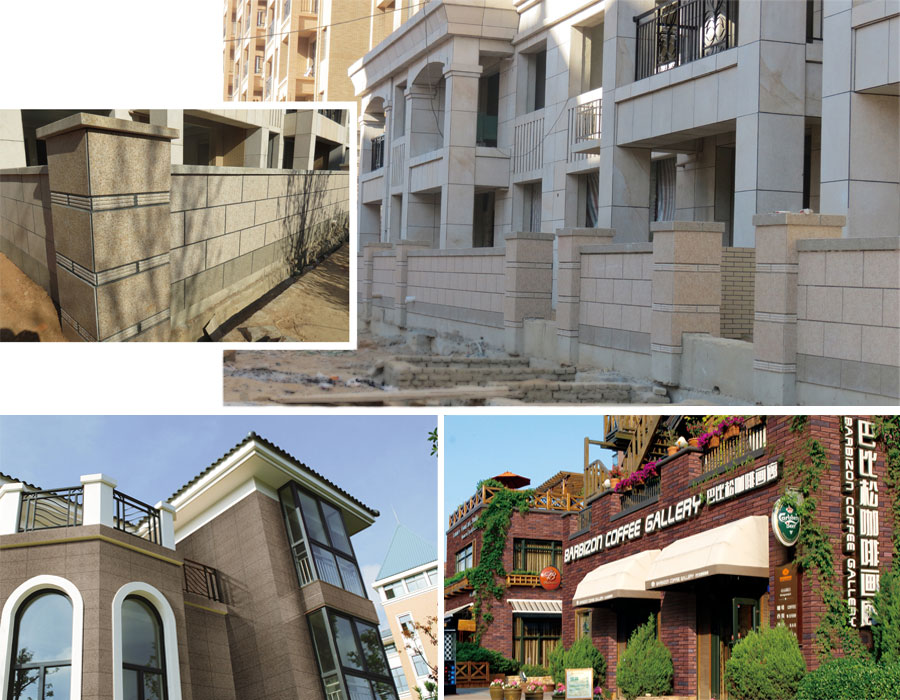Explosion-proof lighting several major classification analysis
2. According to explosion-proof type, it can be divided into five main types: explosion-proof, increased safety, positive pressure, no spark and dust explosion proof. It can also be combined with other explosion-proof types and the above explosion-proof types. Special type.
3. According to the type of protection against electric shock can be divided into I, II, III category. The protection against electric shock is to prevent the explosion-proof lamp housing from being easily touched and the parts are electrified, so that the human body is exposed to electric shock or conductors with different potentials to generate electric sparks and ignite the explosive mixture.
AI class—On the basis of basic insulation, accessible conductive parts that are not energized during normal operation are connected to the protective ground conductor in the fixed line.
Class BII - Use double insulation or reinforced insulation as a safety measure without grounding protection.
Class CIII - Use a safe voltage with an effective value of not more than 50V, and no voltage above it will be generated.
Category D0 - only rely on basic insulation as a safety protection measure.
Most of the explosion-proof lamps and lanterns are protected against electric shock and they are Class I and only a few are Type II and Type III lamps. For example: all plastic explosion-proof lamps, explosion-proof flashlight Jane.
Bright explosion-proof lamps (9 photos) 4. According to the degree of protection of the shell classification: In order to protect the dust, solid foreign bodies and water into the lamp cavity, touch or accumulate in the live parts to produce flashover, short circuit or damage to electrical insulation, etc. A variety of shell protection methods play a role in protecting electrical insulation. The characteristic letter “IP†followed by two digits is used to characterize its enclosure protection level. The first number indicates the protection against humans, solid objects or dust. Divided into 0-6 levels. Explosion-proof lamps are sealed lamps. Their dust-proof capacity is at least 4 levels. The second number represents the protection against water and is divided into 0-8 grades.
5. According to the lighting design of the support surface material classification: Indoor explosion-proof lighting may be installed on the surface of many ordinary combustible materials, such as wooden walls and ceilings, they do not allow explosion-proof lighting installation surface temperature exceeds the safety value. According to whether explosion-proof lamps can be installed directly on the surface of ordinary combustible materials, they can be classified into two categories.
One category is lamps that are only suitable for installation on non-flammable surfaces.
The other category is lamps that are suitable for direct installation on the surface of ordinary combustible materials and are marked with symbols.
6. According to the installation and use of the form can be divided into fixed, portable, portable.
External Wall Tile is available in 25x25mm, 45x45mm, 45x195mm, 100x200mm, 50x200mm, 60x240mm, 100x297mm, 200x400mm, 300x600mm, 400x800mm...
There are many types of Outer Wall Tiles , including Faux Granite Tiles, faux marble tiles, mosaic tiles, etc. suitable for different places.
Advantage of External Wall Panel
1. The surface of the external wall tile has a luster, flat or rough surface, and can present a variety of textures. The design is rich and varied, and has a strong decorative effect.
2, The Outside Wall Tile has superior physical properties, sturdy and durable, good weather resistance, scrub resistance, etc., and has a long service life.
3, Easy to clean, fire, water, wear, corrosion and low maintenance costs.
4. Thin Porcelain Tiles on the outer wall, [light, large and thin", which greatly reduced the building load.

Construction Notes
1. When the structure is constructed, the verticality and flatness of the outer wall should meet the standard requirements. The dust, dirt and grease on the surface of the base are removed.
2. On the base plastering surface, first hang the vertical and horizontal control lines, and then hang out the tile control line according to the size and arrangement of the tiles.
3. When the tile is pasted, the mortar should be full. It is not advisable to knock and move more. Especially after the mortar is collected, it cannot be corrected.
4. After the caulking is completed according to the design requirements, clean the surface with a clean cloth.
5. About 30 hours after the completion of the caulking (depending on the weather at the time), and after the brick joint has solidified to a certain strength, rinse the brick surface thoroughly from top to bottom with clean water.

External Wall Tile
Outer Wall Tiles,Outside Wall Tile,External Wall Panel,External Wall Tile
UMS New Materials Industry Co.,LTD , https://www.ums-factory.com